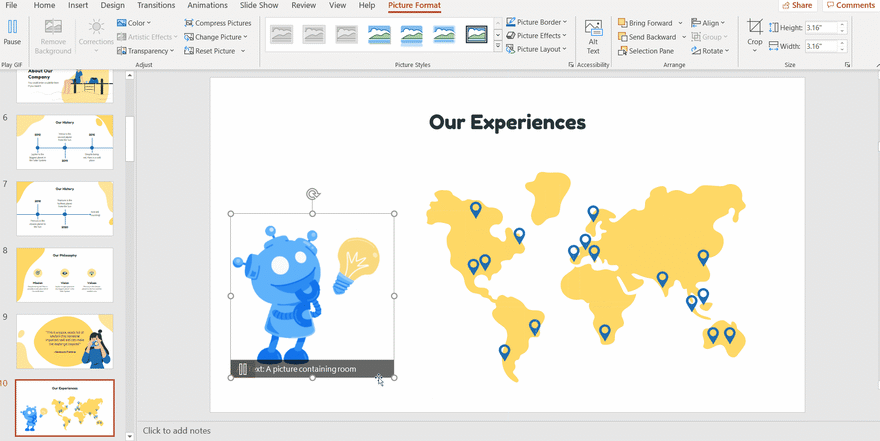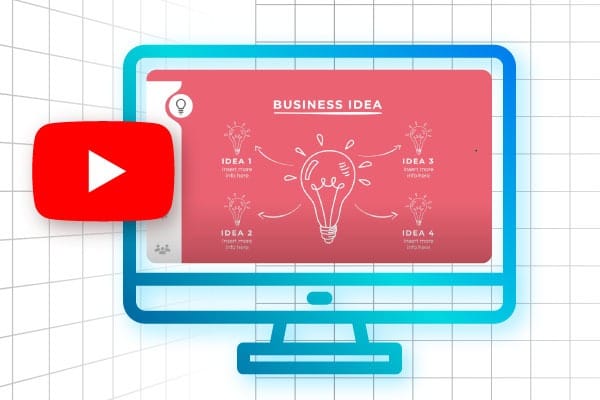
While you might not have the ability to speak or move around freely like us humans can’t ace any presentation with a bit of assistance from your sidekick. An animated PowerPoint! Presentations tend to make us a bit uneasy at times so why not jazz things up a bit and make them more enjoyable? By employing the tools and incorporating animations creatively into your slideshows can turn dull presentations into lively mini-stories that are far more engaging, than plain text alone could ever be! Creating an animated PowerPoint presentation might appear daunting at the outset, but with a solid grasp of the fundamental concepts in place; crafting each slide should only require about 10 minutes of your time. Here are five recommendations, for making notch-animated PowerPoint presentations;

Lets stick to animations
When using animated PowerPoint presentations it’s best to keep things simple and concise. We suggest limiting your animations to around six seconds at most. Going beyond that could lead to audience disengagement. However if the visuals are crucial, for conveying your message you might consider bending this guideline. Utilizing an animation that extends a bit past the six second mark can effectively drive home a point. Long as the main message remains clear longer animations can be used to enhance the visual impact of your slides. A heads up. Try not to go overboard with distractions in your animations; simplicity is key here too! It’s best to steer of intricate motion paths and shapes when working on straightforward illustrations. Stick to the fundamentals and skip any details – opt for simple shapes such, as circles or squares instead of complex ones. For added appeal you can play around with basic colors and patterns. But the main goal is to keep your animations straightforward and easy on the eyes!

Avoid using the animations from one slide, to another
When creating your animations it’s important to consider the sequence in which your visuals will be presented to the audience.If you opt to incorporate an animation from a slide it’s best to avoid placing it within the same slide.This is because altering the sequence of visuals could impact how the audience perceives the visuals and lead to confusion.The recommended approach when transitioning visuals from a slide, to a new one is to present them as though they are being shown for the first time. In this manner the viewers won’t encounter animations repeatedly. If you opt to incorporate a drawing in the initial slide followed by a lengthier animation in the subsequent slide that works well. Just make sure not to continue the drawing from the first slide. The audience should be introduced to the drawing for the time on the second slide and only see fresh visuals on the third slide. If necessary to feature the drawing, on both the first and second slides, a distinct drawing may be used.. If you want to use the picture, on both slides you can do that as well.

Lets have fun with shades and hues
Colors hold influence and we suggest leveraging them fully by exploring various color options for your text presentation slides – whether through diverse hues or patterns or by adjusting text size strategically across different slides to capture viewers attention at key moments, like the initial and concluding slides. An alternative approach to incorporating colors involves introducing appeal through a combination of diverse patterns and colors within the same slide contextually linked to the other slides content elements for coherence and depth of understanding for the audience viewing it live or virtually. For instance;. Utilizing a color scheme can aid in clarifying significant points.. Incorporating patterns, over a map can assist in enhancing the audiences awareness during a presentation or discussion.

Watch out for animated text
Text animation is commonly seen as one of the forms of animation that offers a variety of options in terms of style and presentation speed – from subtle and quick to slow and dramatic effects based on your design choices, for each slide to ensure readability throughout the presentation. This might cause confusion among your audience. Leave them unsure of your intended message. The effective text animations seamlessly integrate with each other enabling the audience to easily read your content even on the final slide of the presentation.

Exercise caution when working with object animations
Using object animations can enhance appeal; however they should be limited to objects that are easily noticeable to ensure the audience can appreciate the movement of the object being animated and have a focal point of interest in the presentation. It is advisable to use object animations, for optimal effect and not overwhelm the audience with excessive movement. To evoke reactions from your audience through movement effects on objects like shaking or wobbling without compromising visibility or clarity of the object itself is key to maintaining interest and engagement in your presentation visuals. Ensure that the object remains prominently displayed for durations—preferably less than a second—to prevent distraction and maintain focus, on key elements. Avoid overusing motion effects on an object as it may diminish its impact; opt for a single distinctive movement that captures attention effectively instead.
Some of the captivating animated presentations feature a blend of various animation styles – from basic imagery with subtle color variations to intricate movements and precise timing, among multiple elements. By incorporating these animations together effectively in your slideshows or videos can produce visual effects that words alone cannot easily convey. Keep in mind that the sequence in which you present your visuals holds significance as it can enhance the impact of your message. You have the flexibility to switch between two visuals seamlessly and experiment with adjusting their speeds and the sequence of their display as you please in order to achieve a desired effect of combining animation styles to your liking.

Closing Thoughts
The effective method to grasp the art of crafting animated presentations is simply by giving it a go yourself without delay! Learning how to create animated PowerPoint presentations doesn’t come with any shortcuts or secret techniques—it’s all about diving in and getting hands on with the creation process right from the start. To get started creating captivating animations through PowerPoint slideshows like a pro, in record time requires following these five essential pointers diligently. Now that you’re equipped with this knowledge. Know what steps to take next lets delve into some stellar examples of top notch animated PowerPoint presentations available online!Exploring everything, from dinosaur encounters to thrilling space battles can offer ideas and motivation for crafting your unique animations.


